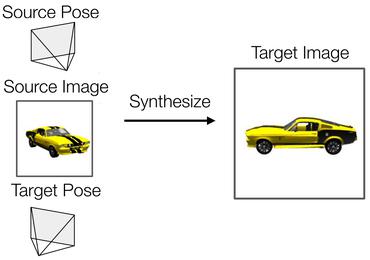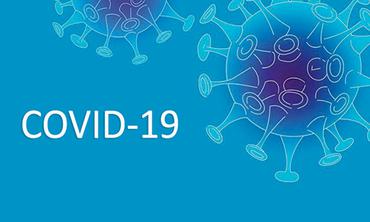Search Results for author: Shijie Li
Found 20 papers, 8 papers with code
Hardware Phi-1.5B: A Large Language Model Encodes Hardware Domain Specific Knowledge
no code implementations • 27 Jan 2024 • Weimin Fu, Shijie Li, Yifang Zhao, Haocheng Ma, Raj Dutta, Xuan Zhang, Kaichen Yang, Yier Jin, Xiaolong Guo
The creation of this first pretrained, hardware domain specific large language model marks a significant advancement, offering improved performance in hardware design and verification tasks and illustrating a promising path forward for AI applications in the semiconductor sector.
VaLID: Variable-Length Input Diffusion for Novel View Synthesis
no code implementations • 14 Dec 2023 • Shijie Li, Farhad G. Zanjani, Haitam Ben Yahia, Yuki M. Asano, Juergen Gall, Amirhossein Habibian
This is because the source-view images and corresponding poses are processed separately and injected into the model at different stages.
Self-supervised OCT Image Denoising with Slice-to-Slice Registration and Reconstruction
1 code implementation • 26 Nov 2023 • Shijie Li, Palaiologos Alexopoulos, Anse Vellappally, Ronald Zambrano, Wollstein Gadi, Guido Gerig
Strong speckle noise is inherent to optical coherence tomography (OCT) imaging and represents a significant obstacle for accurate quantitative analysis of retinal structures which is key for advances in clinical diagnosis and monitoring of disease.
TFNet: Exploiting Temporal Cues for Fast and Accurate LiDAR Semantic Segmentation
no code implementations • 14 Sep 2023 • Rong Li, Shijie Li, Xieyuanli Chen, Teli Ma, Juergen Gall, Junwei Liang
In this paper, we present TFNet, a range-image-based LiDAR semantic segmentation method that utilizes temporal information to address this issue.
 Ranked #1 on
Semantic Segmentation
on SemanticPOSS
Ranked #1 on
Semantic Segmentation
on SemanticPOSS
Semantic RGB-D Image Synthesis
no code implementations • 22 Aug 2023 • Shijie Li, Rong Li, Juergen Gall
In this paper, we therefore propose a generator for multi-modal data that separates modal-independent information of the semantic layout from the modal-dependent information that is needed to generate an RGB and a depth image, respectively.
Microscopy Image Segmentation via Point and Shape Regularized Data Synthesis
1 code implementation • 18 Aug 2023 • Shijie Li, Mengwei Ren, Thomas Ach, Guido Gerig
Current deep learning-based approaches for the segmentation of microscopy images heavily rely on large amount of training data with dense annotation, which is highly costly and laborious in practice.
Crop mapping in the small sample/no sample case: an approach using a two-level cascade classifier and integrating domain knowledge
no code implementations • 26 Dec 2022 • Yunze Zang, Yifei Liu, Xuehong Chen, Anqi Li, Yichen Zhai, Shijie Li, Luling Liu, Chuanhai Zhu, Ruilin Chen, Shupeng Li, Na Jie
To solve this problem, a crop mapping method in the small sample/no sample case that integrating domain knowledge and using a cascaded classification framework that combine a weak classifier learned from samples with strong features and a strong classifier trained by samples with weak feature was proposed.
Dual Pyramid Generative Adversarial Networks for Semantic Image Synthesis
1 code implementation • 8 Oct 2022 • Shijie Li, Ming-Ming Cheng, Juergen Gall
The goal of semantic image synthesis is to generate photo-realistic images from semantic label maps.
Toward An Optimal Selection of Dialogue Strategies: A Target-Driven Approach for Intelligent Outbound Robots
no code implementations • 22 Jun 2022 • Ruifeng Qian, Shijie Li, Mengjiao Bao, Huan Chen, Yu Che
With the growth of the economy and society, enterprises, especially in the FinTech industry, have increasing demands of outbound calls for customers such as debt collection, marketing, anti-fraud calls, and so on.
Improved Counting and Localization from Density Maps for Object Detection in 2D and 3D Microscopy Imaging
no code implementations • 29 Mar 2022 • Shijie Li, Thomas Ach, Guido Gerig
Our results show improved performance in counting and localization of objects in 2D and 3D microscopy data.
Point-supervised Segmentation of Microscopy Images and Volumes via Objectness Regularization
1 code implementation • 9 Mar 2021 • Shijie Li, Neel Dey, Katharina Bermond, Leon von der Emde, Christine A. Curcio, Thomas Ach, Guido Gerig
Annotation is a major hurdle in the semantic segmentation of microscopy images and volumes due to its prerequisite expertise and effort.
Spatial-Temporal Consistency Network for Low-Latency Trajectory Forecasting
no code implementations • ICCV 2021 • Shijie Li, Yanying Zhou, Jinhui Yi, Juergen Gall
Trajectory forecasting is a crucial step for autonomous vehicles and mobile robots in order to navigate and interact safely.
Pose Refinement Graph Convolutional Network for Skeleton-based Action Recognition
no code implementations • 14 Oct 2020 • Shijie Li, Jinhui Yi, Yazan Abu Farha, Juergen Gall
To this end, the network first refines the poses before they are further processed to recognize the action.
Multi-scale Interaction for Real-time LiDAR Data Segmentation on an Embedded Platform
2 code implementations • 20 Aug 2020 • Shijie Li, Xieyuanli Chen, Yun Liu, Dengxin Dai, Cyrill Stachniss, Juergen Gall
Real-time semantic segmentation of LiDAR data is crucial for autonomously driving vehicles, which are usually equipped with an embedded platform and have limited computational resources.
 Ranked #2 on
Real-Time 3D Semantic Segmentation
on SemanticKITTI
Ranked #2 on
Real-Time 3D Semantic Segmentation
on SemanticKITTI
Rethinking 3D LiDAR Point Cloud Segmentation
1 code implementation • 10 Aug 2020 • Shijie Li, Yun Liu, Juergen Gall
Many point-based semantic segmentation methods have been designed for indoor scenarios, but they struggle if they are applied to point clouds that are captured by a LiDAR sensor in an outdoor environment.
MS-TCN++: Multi-Stage Temporal Convolutional Network for Action Segmentation
1 code implementation • 16 Jun 2020 • Shijie Li, Yazan Abu Farha, Yun Liu, Ming-Ming Cheng, Juergen Gall
Despite the capabilities of these approaches in capturing temporal dependencies, their predictions suffer from over-segmentation errors.
 Ranked #5 on
Action Segmentation
on Assembly101
Ranked #5 on
Action Segmentation
on Assembly101
MiniSeg: An Extremely Minimum Network for Efficient COVID-19 Segmentation
1 code implementation • 21 Apr 2020 • Yu Qiu, Yun Liu, Shijie Li, Jing Xu
On the other hand, fast training/testing and low computational cost are also necessary for quick deployment and development of COVID-19 screening systems, but traditional deep learning methods are usually computationally intensive.
Exploring Frame Segmentation Networks for Temporal Action Localization
no code implementations • 14 Feb 2019 • Ke Yang, Xiaolong Shen, Peng Qiao, Shijie Li, Dongsheng Li, Yong Dou
The proposed FSN can make dense predictions at frame-level for a video clip using both spatial and temporal context information.
Joint Association Graph Screening and Decomposition for Large-scale Linear Dynamical Systems
no code implementations • 17 Nov 2014 • Yiyuan She, Yuejia He, Shijie Li, Dapeng Wu
In particular, our method can pre-determine and remove unnecessary edges based on the joint graphical structure, referred to as JAG screening, and can decompose a large network into smaller subnetworks in a robust manner, referred to as JAG decomposition.
















